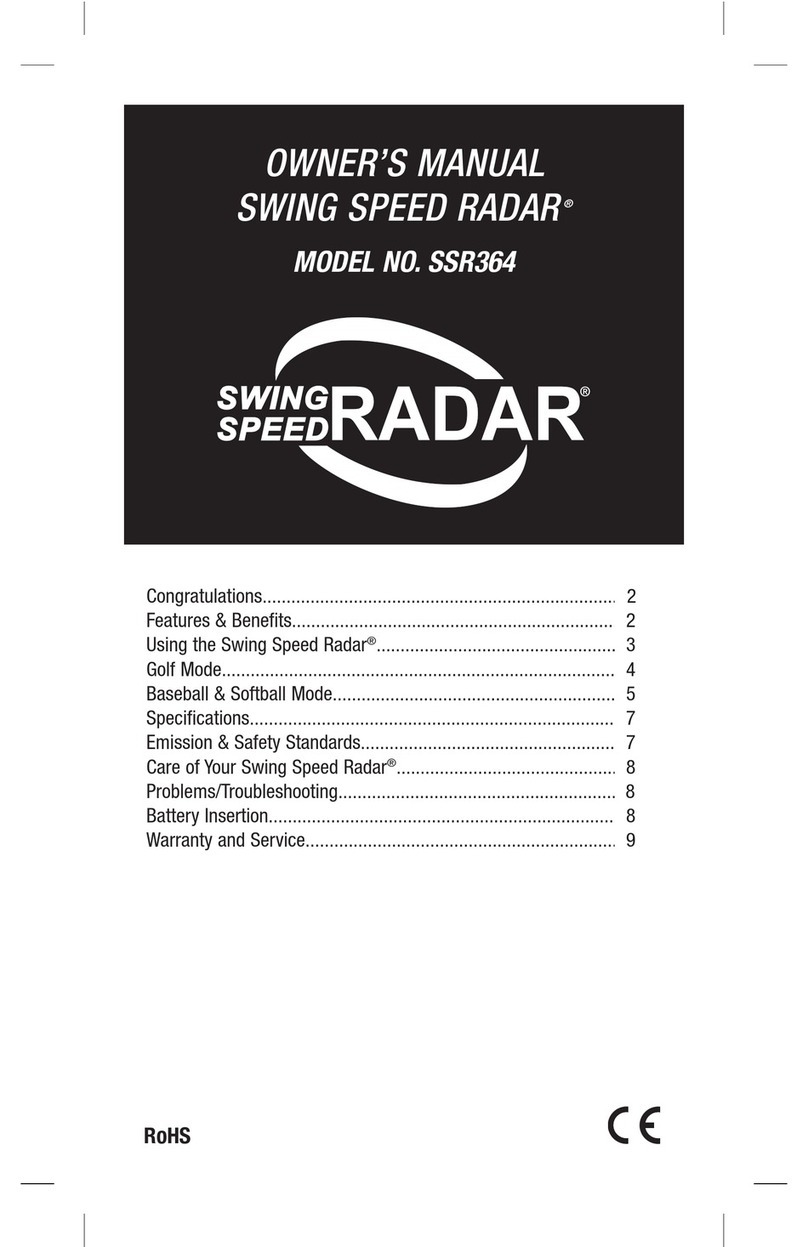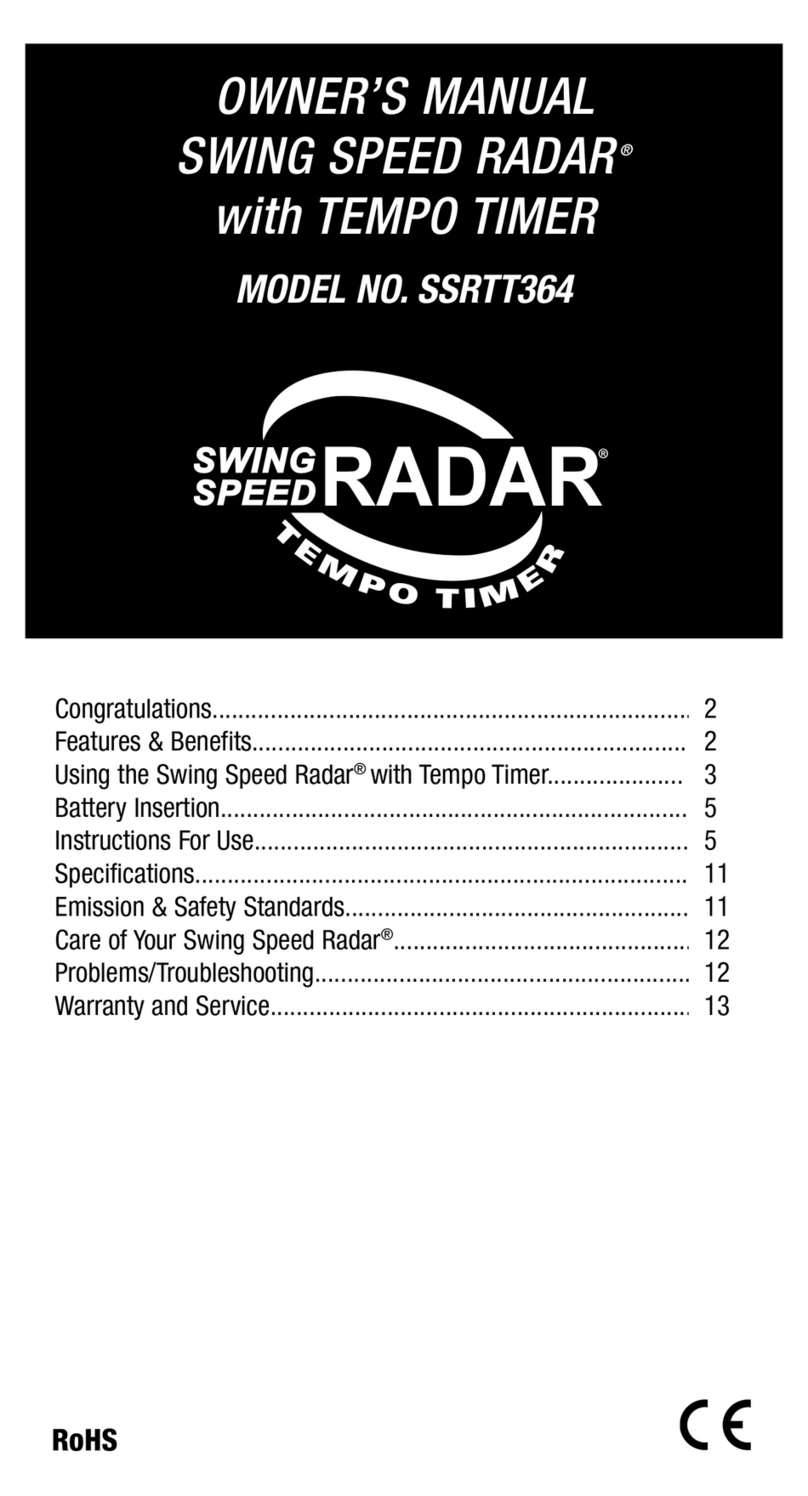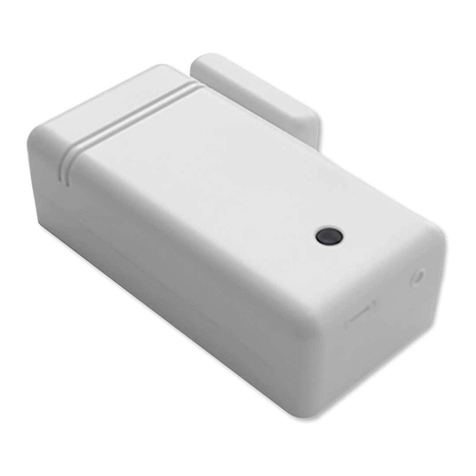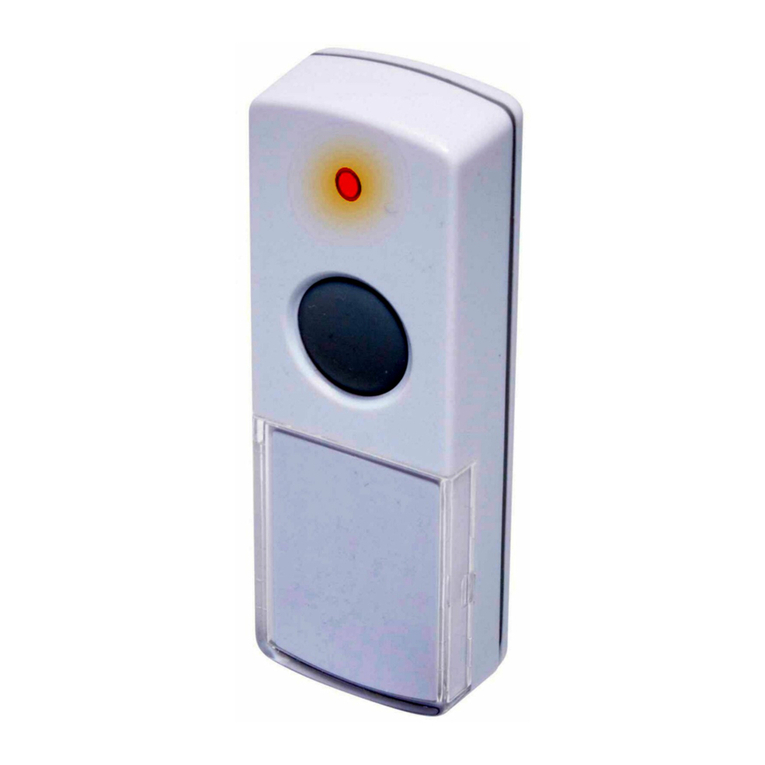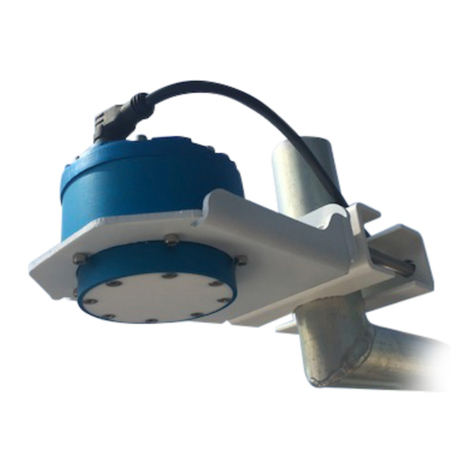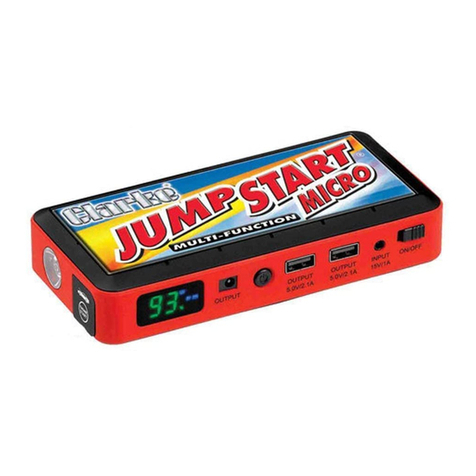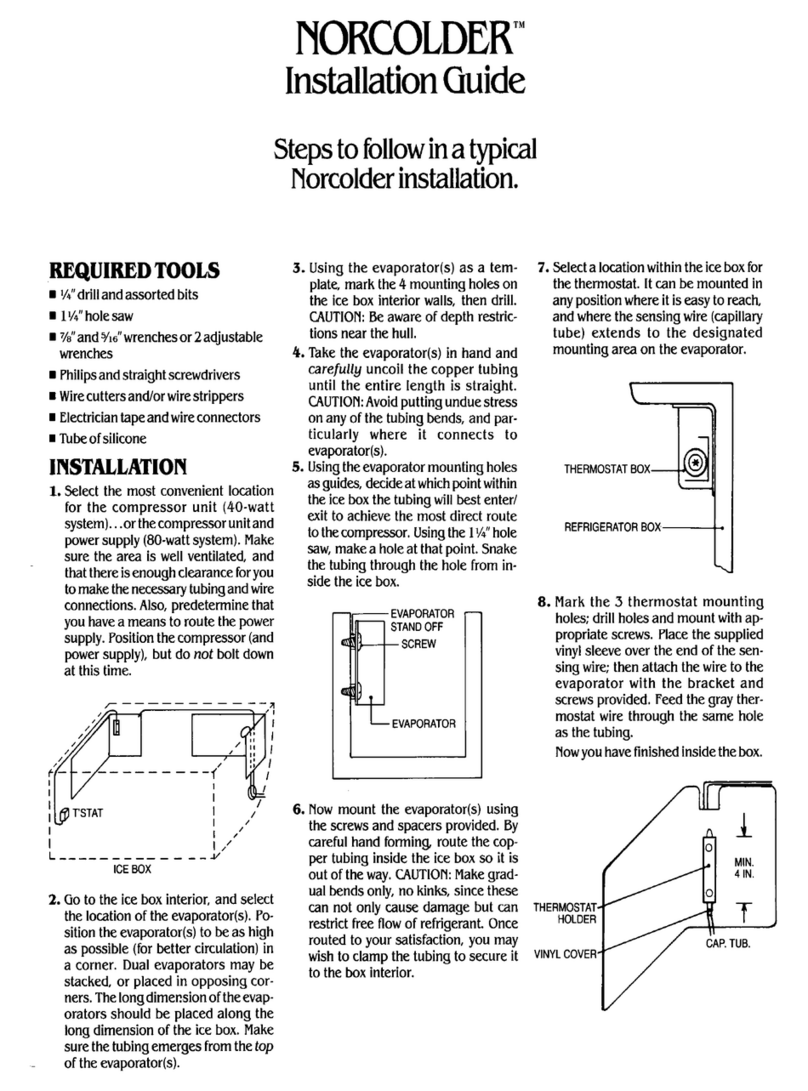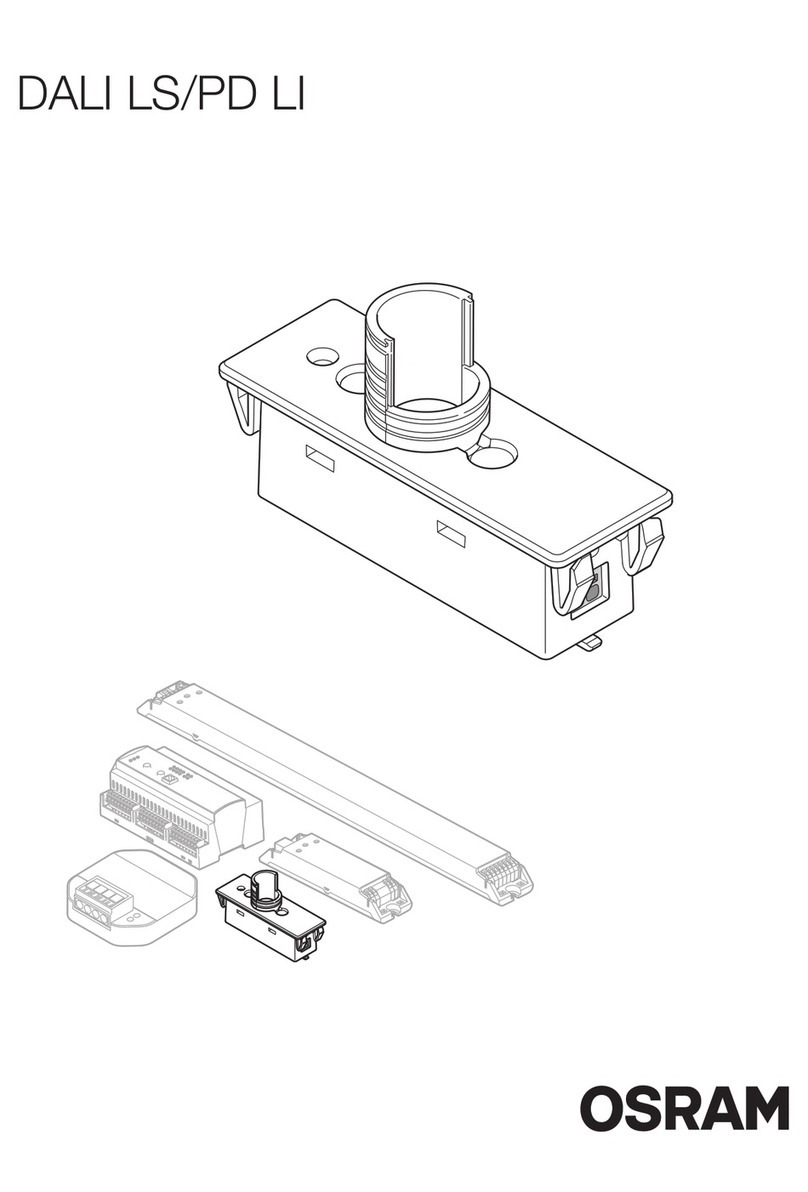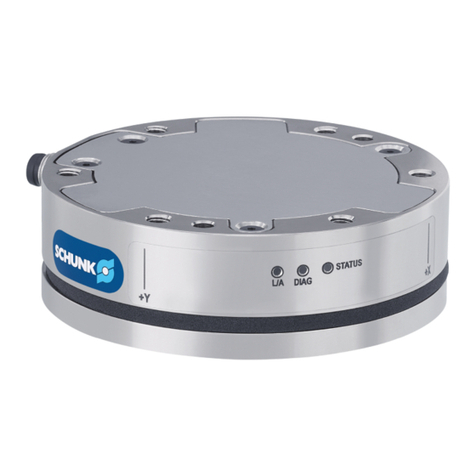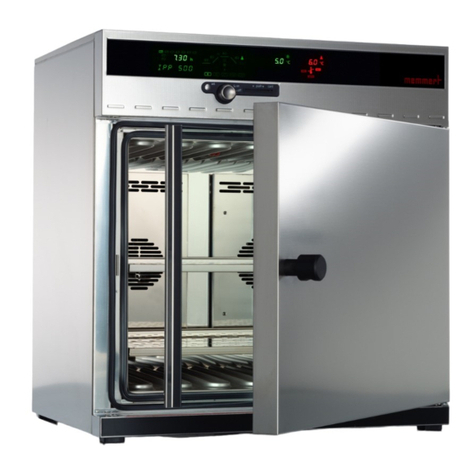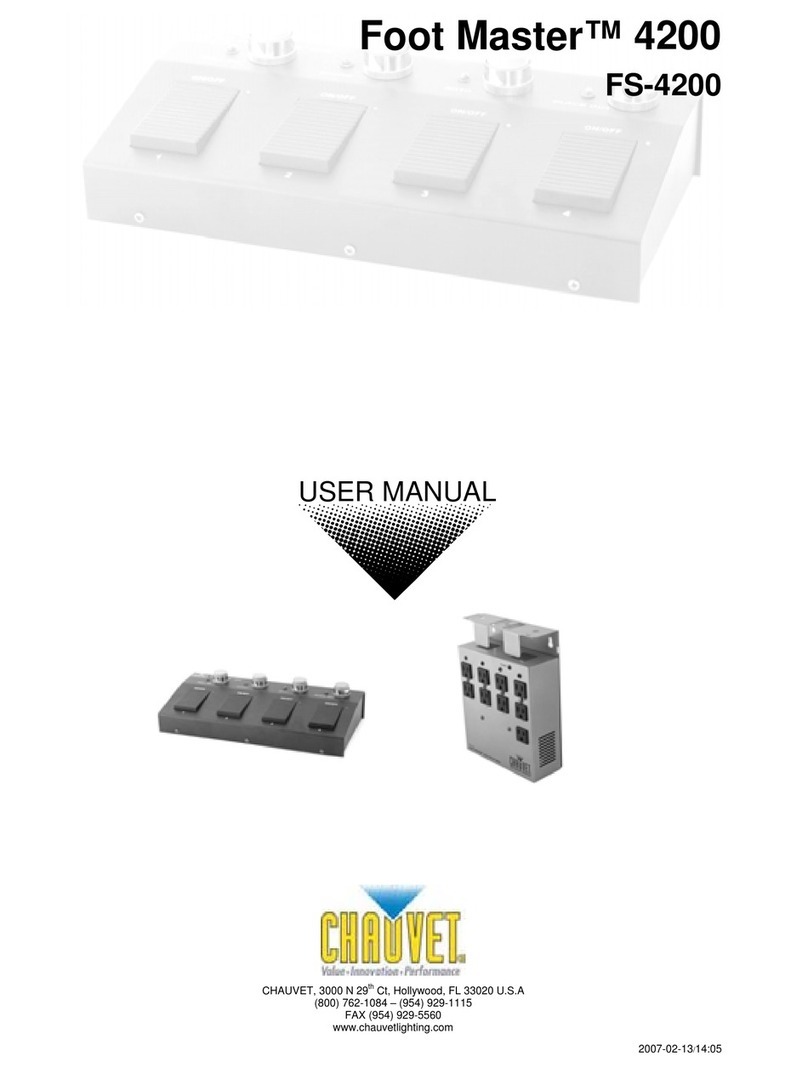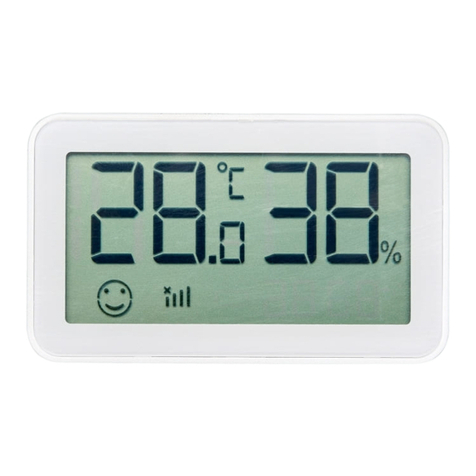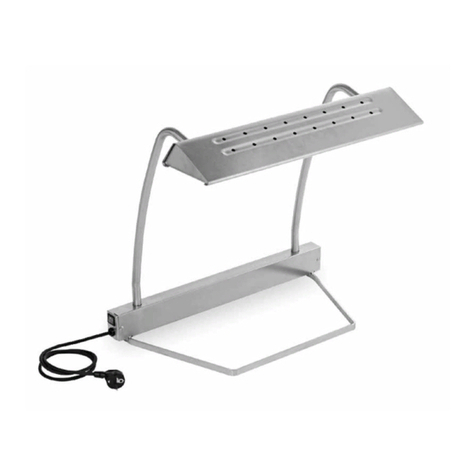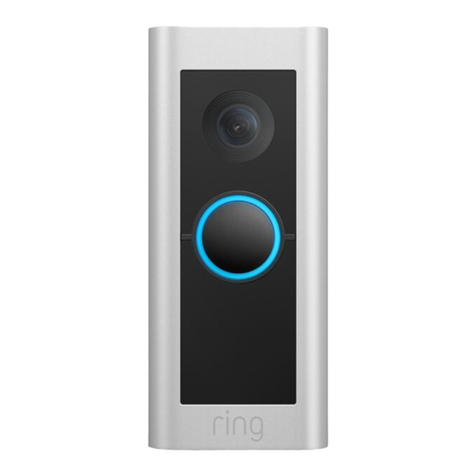Sports Sensors gloveRADAR GR360 User manual

OWNER’S MANUAL
Congratulations................................................................................ 2
Features......................................................................................... 2
Glove Attachment Reference.......................................................... 3
Using the Glove Radar®.................................................................. 3
Throwing Preparations................................................................... 4
Proper Throwing Techniques.......................................................... 4
Specifications...................................................................................6
Emission & Safety Standards........................................................... 6
Care of Your Glove Radar®.............................................................. 6
Problems/Troubleshooting.............................................................. 7
Battery Replacement....................................................................... 7
Replacement Parts......................................................................... 7
Attachment to Any Glove................................................................. 8
Variables of Radar Measurements.................................................. 11
Warranty and Service..................................................................... 15
0123
RoHS
MODEL
NO. GR360

Congratulations on purchasing your Glove Radar.
®
If used and cared-for
as described in this Manual, you should enjoy many hours of fun and
constructive use.
The Glove Radar
®
is a small inexpensive Doppler radar velocity sensor which
attaches to a baseball or softball glove to measure the speed of the ball just
before it is caught. It is easily attached to, and removed from, virtually any
ball glove. Clever design results in a small, versatile low-cost device
affordable for youth and senior level teams and individual players.
The purpose of the Glove Radar
®
is to assist in developing players’ throwing
capabilities by providing a measure of velocity improvement which results
from using proper throwing techniques. By learning the proper way to
condition, train, warm-up and throw, players can achieve their best accuracy
and velocity performance, while reducing the risks of injury to their arm and
body.
The Glove Radar
®
can aid any player--infielders and outfielders, as well as
pitchers and catchers, throwing from any distance. Professional and high-
level amateur players can use the Glove Radar
®
when warming-up. Young
ballplayers will benefit from velocity information when
tossing or training. Everyone will have fun using it.
Worn by the receiver of the ball, or by multiple tossing partners in
non- game situations, the Glove Radar
®
"sees" through the glove and
responds to the approaching ball just before it reaches the glove. Thus,
unlike most “radar speed guns”, a long range capability is not required.
Powered by a single cell lithium battery, the Glove Radar
®
transmission level
is well below that of most “wireless” consumer products such as cellular and
portable telephones, for example. Transmission characteristics are well within
FCC requirements and prescribed safety levels. The Glove Radar
®
is
microprocessor controlled, like a mini-computer, and indicates calculated
kilometers-per-hour ball speed on a liquid crystal display.
FEATURES
The Glove Radar
®
is packaged in a rugged plastic housing assembly, sealed
to protect the internal electronics from the dust, dirt and moisture
encountered during normal use. However, the unit is not hermetically sealed
and is not intended to be immersed in water. Two screws hold the cover in
place, which can be removed to replace the internal battery. A rubber pad,
molded onto the housing surface adjacent to the glove, absorbs ball impact
“shock” forces.
2
Upon receipt of a velocity signal produced by a ball about to be caught
in the glove, the ball speed is calculated and shown on the display in
kilometers-per-hour. Receipt of a velocity signal turns-off the radar transmitter
until the “on” switch is depressed. If a velocity signal is not received within
twenty seconds after depressing the push-button “on” switch, electrical
power is automatically removed from the radar transmitter until the switch
button is again depressed. Limiting the “on” time of the radar transmitter
conserves battery power in order to maximize battery life. The last velocity
reading continues to be displayed. However, after prolonged inactivity (about
one minute) battery power is also removed from the display and the
electronics go into the “sleep” mode.
GLOVE ATTACHMENT REFERENCE
Instructions for attaching the Glove Radar
®
to any ball glove/mitt are
described later in this Manual. The prescribed attachment techniques have
been developed to assure safe, reliable operation of the Glove Radar
®
while
experiencing the significant impact forces created when catching balls thrown
at very high velocities.
USING THE GLOVE RADAR®
1. Attach the Glove Radar
®
to the glove, as explained in the GLOVE
ATTACHMENT instructions.
3. Press the push button “on” switch a second time. Two flashing zeros
indicate that the radar is transmitting. The Glove Radar
®
is now ready
for measuring the velocity of a ball being caught.
5. Before returning the ball back to the thrower, reset the radar
transmitter by depressing the push button “on” switch. This sequence
is recommended to avoid the situation where the person catching the ball
will not be concentrating on the next throw, when the thrower is preparing
to throw. (The push button “on” switch is large and conveniently located
such that it can be found and depressed without actually looking at it.)
7. When speed-measuring throwing activities have been concluded, and the
Glove Radar®is dormant for about one minute, it will automatically switch
into the “sleep” mode, which conserves battery power. The display will then
be blank until the sequence in 2. above is resumed.
3
4. After the ball is caught, observe the MPH display to read the ball speed.
2. Press the push button “on” switch (denoted by the Glove Radar®logo)
to energize the Doppler radar transmitter. The MPH display will show
the last reading.
6. If the next throw does not occur within twenty seconds, the power-saving
timer will turn off the radar transmitter. Therefore, when preparing to
receive the next throw, again depress the push button “on” switch. Flashing
zeros on the MPH display indicate that the radar is transmitting and ready
to record the ball speed.
The internal electronics are in the “sleep” mode until activated by depressing
the push-button “on” switch. This action applies electrical power from the
battery to the Doppler radar transmitter. The liquid crystal MPH display will
indicate the last velocity reading. Depressing the push-button again will
cause the display to show aflashing “00”,indicating that the Glove Radar®
is transmitting.

THROWING PREPARATIONS
Taking care of your arm and body and learning proper techniques are vital
to achieving success in throwing/pitching. Consult your coach, trainer, doctor
or parent for guidance. The following steps are strongly recommended:
1. Undertake a conditioning program to get your arm and body in shape
for baseball/softball.
2. Before throwing, stretch and warm-up your arm and body.
3. Begin throwing at slow speeds and over short distances. Gradually extend
the distance and increase the speed. The Glove Radar
®
can help monitor
this process.
4. Be sure you know and practice the proper throwing/pitching techniques.
By throwing correctly, you will be able to achieve your best velocity and
hit your target, while reducing the likelihood of injuring your arm or body.
As you learn and master the proper techniques, you will see improve-
ments in your performance. The Glove Radar
®
will provide the measure-
ments by which velocity performance improvements can be readily seen.
This reinforcement creates player enthusiasm for seeking improve-
ment by applying proper throwing/pitching techniques.
5. If you experience pain while throwing/pitching, or afterward, consult
your doctor, trainer, coach or parent immediately. Do not ignore pain!!
SUMMARY OF PROPER THROWING TECHNIQUES
1. By learning the proper throwing techniques, players can achieve their
best velocity and accuracy while reducing the risk of injury to their arm
and body.
2. Learning the proper throwing techniques when young allows a player’s
muscles and mind to develop the correct memory. Proper throwing
can therefore become a good habit that will stay with players through
out their playing lives.
3. Proper throwing starts with conditioning activities well before the ball
season begins.
4. Stretching and warming-up the entire body, as well as the shoulders and
arms, is necessary before actually starting to throw. “Warm-up to throw;
don’t throw to warm-up,” as stated by the American Sports Medicine
Institute.
5. Start throwing slowly, over a short distance. Gradually lengthen the
distance and increase velocity. This warm-up period will vary with the
individual, but will be typically 10--20 minutes.
6. Proper throwing techniques can be summarized as follows:
•Plantthebackfoot,onthesideofyourthrowingarm,andstepwiththe
front foot toward the receiver.
•Asyoustep,turntheshoulderofyourglovedhandalsotoward
the receiver.
•Reachdownandbackforpower,keepingyourhandontopoftheball,
palm facing downward.
•Extendthearmoftheglovedhandforward,forbalance,generallywith
the elbow somewhat bent and your thumb down.
•Keepyoureyesonthetargetasyou“comealmostoverthetop”withthe
ball. Sidearm throws are sometimes necessary in game situations, but
maximum velocity and accuracy can be achieved with an overhand
throwing motion. Let this be your natural motion.
•Releasetheballoutinfrontofyourbodyafteryourarmpasses
your head.
•Followthroughwithyourarmandbody—donotletyourthrowing
side stay back.
•Yourarmfollow-throughwillbeasmootharcdownandacrosstothe
opposite side of your body to allow your arm to slow down after releasing
the ball.
•Theentirethrowingmotionshouldbesmooth,notherky-jerky.
•Startoffslowlyuntiltheentiresequencebecomesnaturaland
comfortable.
7. Practice throwing from your position on the field.
•Workonreceivingtheballcomingtoyouoneitherside,highorlow.
•Getintoyourthrowingpositionasyouarereceivingtheball.
•Tobebestpreparedtomakeaquickthrow,catchtheballwithboth
hands so that the ball can be transferred easily to your throwing hand.
—Getyourbodymovingasyoureceivetheballsothatyourstep
toward the receiver is a natural part of making the catch. A short hop or
“crow-step” will give your body momentum to make the throw.
•Getsetwhenmakingathrow;trytoavoidthrowingoff-balance,
although occasionally it will be necessary.
•Practicegettingridoftheballquickly—infielderstogetafastrunner
and outfielders to nail the runner tagging-up or stretching a hit. Imagine
various game situations as you toss and practice.
8. The three things that make a good ballplayer are:
•PRACTICE •PRACTICE, •andPRACTICE!!
4 5

SPECIFICATIONS
The specifications of the Glove Radar
®
are summarized as:
U.S.: 5,864,061; 6,079,269; 6,378,367; 6,666,089; 6,898,971 B2
Canada: 2,248,114
Japan: 3,237,857
EMISSION AND SAFETY STANDARDS
The Glove Radar
®
has been tested and certified to meet requirements estab-
lished by the Euro Union, Industrie Canada, The Australian Communications
Authority, and the Federal Communications Commission. The FCC ID is NVE
360. “This device complies with Part 15 of the FCC Rules Operation is subject
to the following two conditions: (1) This device may not cause harmful interfer-
ence, and (2) this device must accept any interference received, including
interference that might cause undesired operation.” The Glove Radar
®
complies
with current standards established for safety levels of human exposure to radio
frequency energy, including the requirements of C95.1-1992.2 defined by the
American National Stand-ards Institute (ANSI) and the Institute of Electrical and
Electronics Engineers (IEEE); and those of the Canadian Department of Health
and Welfare, Safety Code 6. Use of the Glove Radar
®
, or any other radiating
device, may create problems when in close proximity to electronic medical
devices, such as heart monitoring equipment or pacemakers/ regulators.
Avoid such use. RoHS and CE compliant.
CARE OF YOUR GLOVE RADAR
®
The Glove Radar
®
is a unique electronics product intended for training, practice
and tossing situations, not for game use. Although the rugged design will with-
stand the rigors of normal use, it should be protected from direct ball impacts,
and should not be dropped, thrown, hit with a bat or other objects, and should
not be immersed in water or other liquids. Do not use or leave outdoors dur-
ing
inclement weather. Store the Glove Radar
®
in typical in-house environ-
ments, avoiding excessive temperature extremes, humidity, dust and dirt. The
plastic assembly housing of the Glove Radar®is sealed and not intended to
be taken apart except for battery replacement. Remove the Battery if the unit
will not be used for extended periods. The Glove Radar
®
can be cleaned with
a slightly damped, soft cloth. Do not use alcohol, solvents, or chemical clean-
ers which can cause permanent damage. Replace the Battery when low
power is indicated, as discussed in the following section. With proper care,
The Glove Radar
®
will provide many hours of service and fun for the users
PROBLEMS/TROUBLESHOOTING
The Glove Radar®is designed to provide trouble-free performance
when used properly, and given proper care. Battery replacement is the
primary corrective action that can be taken by the user. Symptoms of a
low or dead Battery are: No flashing display after the radar “on” button
is pushed; No display or an erratic display. Other abnormal operating
characteristics can be caused by a weak Battery or loose Battery
contacts. Nearby sources that are “electrically noisy”, such as fluorescent
lights, electric motors, cell phones, or high power transmission lines, for
example, can cause the spontaneous display of anomalous speed or
tempo readings. Avoid close proximity to such sources when using the
Glove Radar®
.
BATTERY REPLACEMENT
Replace the Battery by removing the two screws which hold the Cover
in place, exposing the Battery. Remove the Battery and replace it with
a new one, being careful to insert the new Battery with the negative
terminal toward the spring in the center of the contact nest, and the
positive terminal (case) protruding outward toward the Cover which has
been removed. Carefully place the Battery into the contact nest, being
sure that the three upright contacts are snug against the Battery case.
(Loose Battery contacts can cause intermittent electrical connection,
indicated by a “188” reading on the LCD Display.) Engage the two tabs
on the Cover with the slots in the Housing, and pivot the Cover down
over the Battery, which is positioned in the contacts nest. Replace the
two screws that hold the Cover in place. Tighten the screws snugly,
but do not over-tighten. Depress the radar “on” button and perform the
operating sequence described in the section of this manual entitled
USING THE Glove Radar®
.
Battery (3 volt lithium, N/3 size) can be purchased at many stores which
sell camera supplies or similar electronic devices.
6 7
Size: Triangular ,21/2” w; 31/2” l; 13/16” th.
Weight: 3oz
Display Type: 21/2 Segment LCD
Speed Units: Miles-Per-Hour (MPH)
Speed Range: 20-120 MPH
Accuracy: Within 1MPH of typical sports radar speed guns at
comparable receiving positions
Battery: 3Volt, 160 mAh, Lithium CR-1/3N, DL-1/3N, 2L76BP
Battery Operating Life: Approx. 30 Hours of continuous use; over 5000
transmission cycles (5000 speed measurements)
Operating Temperature: 40-110 degrees F
Storage Temperature: 32-120 degrees F
Related Patents:

ATTACHMENT OF THE GLOVE RADAR®TO ANY GLOVE
3. Bring both cord ends back toward, and up through, their respective eyelets.
4. Route each cord adjacent to the Glove Radar
®
cover and down through the
bottom eyelet. Pull out the slack in the cord. Slip the two cord ends into the
small rubber band and slide the band up toward the lower eyelet.
5. Wrap one cord end ( the longer one, if different lengths) around a lower
glove lace, or other glove feature that the cord can securely wrap around.
6. Adjust the cord for a snug fit around the Glove Radar
®
, removing slack.
Pull and tie the two cord ends together into a tight knot, locating the knot
near the bottom where the cord is attached to the glove.
1. Insert each end of the cord down through the top two eyelets and
pull upward such that the cord ends are about even in length.
2. Place the Glove Radar®behind the glove fingers, about 2.5 to 7.5 cm
below the glove finger tips. (See TIPS.) Pull each end of the cord up
toward the glove finger tips. Wrap the cord ends around the glove lacing
between the glove fingers, with one cord end around the lacing
between the first and second fingers, and the other cord end around
the lacing between the third and fourth glove fingers.
8 9
The Glove Radar®is attached to any ball glove, large or small, baseball or
softball, by astrong, weather-resistant nylon cord. The cord is inserted
through the three Glove Radar®eyelets, carefully routed, secured around
selected glove features, such as the leather lacing and/or the wrist strap, and
tied in place. This attachment technique is compatible with the designs and
dimensions of virtually any conventional ball glove or mitt commonly in use.
The strong nylon cord, and attachment of the Glove Radar®on the back of
the glove finger area, provide safe, reliable performance even after encoun-
tering the severe impact forces created by high velocity ball impacts (ball
speeds greater than 90 MPH). Design of the Glove Radar®,and its attach-
ment system, to withstand the maximum likely thrown ball velocities assures
considerable margin for most users who are involved with much lower ball
speeds. For small gloves (less than 10 inch patterns), and for ball velocities
less than 50 MPH, the Glove Radar®may be attached behind the glove web,
if necessary. However, the finger area is recommended for
attachment whenever possible, and must be used for ball speeds over 50
MPH. One step-by-step attachment technique is described as follows:

TIP—ThetopoftheGloveRadar
®
should be positioned within about 2.5 to
7.5 cm below the glove fingertips. If the ends of the cord are too long, take
up the extra length by attaching to a lower glove feature, or locating the
Glove Radar
®
lower from the glove finger tips. Move it closer to the tips if
more cord length is needed.
VARIABLES OF BALL SPEED RADAR MEASUREMENTS
Ball Speed Slow-Down
Radar Speed Variables
Several different “Radar Speed Guns” are used to measure the speed of a
thrown ball. Some radars, referred to as “fast guns”, measure the speed of
the ball within a few meters after it leaves the hand of the thrower or pitcher.
Since the speed at “release” is the pitcher’s maximum, it is often the
speed that most players use as a reference, since everyone is generally
interested in quoting their “fastest” speed. Although these “fast guns” are
excellent instruments, they can occasionally present an erroneous speed
indication due to the pitcher’s motion, leg kick, arm swing, or other false
target anomalies often referred to as “ghost” readings for all radars.
7. Place the two free cord ends within the band loop, sliding the band to the
proper place to encircle the cord bundle. Long loose ends can be tucked
between the Glove Radar
®
and the glove. The Glove Radar
®
is now ready
for use.
8. The lower cord attachment can also be made by wrapping the lace
around the wrist strap of a small glove.
9. If the glove does not have fingers, such as a catcher’s mitt or first
baseman’s glove, use the top edge lacing for the top two cord attach
ments. Slip the cord tip under the lacing and wrap the cord around
the lace for a secure attachment.
10.The Glove Radar
®
can also be attached behind the thumb of a
catcher's mitt.
TIP—BesuretokeeptheGloveRadar
®
attached snugly to the glove. If it
becomes loose, untie the knot, pull out the cord slack, and re-tie the knot.
10 11
When aball leaves the thrower’s hand, it is travelling at its’ maximum
velocity. Air resistance (drag) causes the ball to decrease in velocity as it
travels away from the thrower. The rate at which the ball slows-down is
dependent upon many factors. Robert K. Adair, Sterling Professor of Physics,
Yale University, describes in great detail the flight of athrown (and batted)
baseball in his outstanding book, “The Physics of Baseball”*. Written for the
layperson, but appropriately supported by theory, the book summarizes the
Professor’s conclusion (page 33) that atypical (Major League) fastball
slows-down at arate of about 1mile-per-hour for every 7feet of travel.
Thus, aball thrown by apitcher will reach home plate, 60 feet 6inches
away, at aspeed about 9miles-per-hour slower than when it left the
pitcher’s hand. Many variables which affect the air resistance “drag” on the
ball, and associated air turbulence, enter into this
conclusion, including air density, temperature, altitude, barometric pressure,
wind velocity and direction, etc.; as well as the ball cross- section area,
surface roughness, stitch height and stitch orientation relative to ball spin
axis; and ball velocity. However, for the purposes of this discussion, and the
applicability to using ball speed measuring devices, it is sufficient to apply
the Professor’s generalization that aball slows-down at arate of 1MPH for
each 7feet of travel from the thrower’s hand. When asked the specific
question about the deceleration of asoftball, Professor Adair offered the
opinion, interpreted by this writer, that the increased drag, relative to
abaseball, would be offset by the momentum of the heavier softball,
resulting in approximately the same rate of slow-down as the baseball.

It is of interest to note that the ball speed measured by any radar is that of
the ball velocity vector directly toward the radar. If the radar is not
aligned with the actual flight path of the ball from the thrower to the receiv-
er, the radar speed reading will be reduced by the cosine of the angle by
which the radar is displaced from the ball travel path. This difference is
insignificant when the radar is located essentially in-line, or near alignment,
with the ball flight path. However, if any radar is positioned on the ground, or
on a tripod, such that it is appreciably away from the ball flight path, speed
measurement inaccuracies can occur.
Glove Radar®Variables
The broad antenna pattern and unique signal processing of the Glove Radar®
facilitate speed measurements of virtually any ball which is caught in the
glove. However, if the glove is held such that the Glove Radar®is facing
downward, looking toward the ground without facing at least somewhat in the
direction of the ball, some balls can be “missed” by the radar. No radar gun
can see the ball when looking away from the balls’ flight path. Since the Glove
Radar®is measuring and calculating the speed as the ball is approaching the
glove, the flight path vector created by any “break” on the ball is inherent in
the speed measurement. This feature is unique to the Glove Radar®, unlike
that of radar guns reading the ball velocity at a greater distance from the
catcher, before the break.
Doppler radar speed measurements indicate the relative closing, or depar-
ture, velocity between the object being illuminated by the radar and the
radar itself. If, in the act of catching the ball, the glove is moved vigorously
toward the ball, a slightly higher speed reading can occur. If the receiver
“gives” with the ball, moving the glove away as the ball is caught, then a
slightly lower velocity can be indicated. The normal movements in catching
most balls are not a serious factor in measurement accuracy, but lunging
for wild throws, and scooping-up low throws near or hitting the ground can
produce anomalous speed readings. As you use your Glove Radar®, you will
become acquainted with its’ “personality”, recognizing good readings and
ignoring anomalies. Don’t be mislead by an unusually high reading as an
indication of sudden improvement, or a low reading as a loss of strength
or technique. Averaging several readings, and/or discarding the high and
low extremes is a good technique for assessing progress.
These readings are generally infrequent and in no way demean the
integrity of these precision instruments for practical ball speed measure-
ment applications.
The Glove Radar®works on the same Doppler principles as the
conventional “Radar Speed Guns” but transmits much less power, due to its’
smaller single-cell battery power supply. It also has a much broader antenna
pattern to accommodate use with the variety of glove sizes and configura-
tions to which it is designed to be attached. Thus, the Glove Radar®
illuminates the approaching ball with a much lower “microwave energy
density” than the larger, more expensive guns.
®
The accuracy of the Glove Radar®compares closely with that of the
more expensive radar guns when positioned to measure ball speed in
the same location. Comparisons can be made by facing the nearby ball
receiver who is wearing the glove-attached Glove Radar®and pointing the
radar gun toward the receiving glove. The distance from the receiver of the
ball should be the minimum practical at which the radar gun will measure
the ball speed.
12 13
Some “Radar Speed Guns” measure the speed of the ball after it has
travelled 6-8 meters from the thrower. Anomalous readings due to the
pitcher’s motion are less likely, and the signal processing of numerous
“Doppler cycles” can result in an accurate measurement less influenced
by false target “ghosts”. However, the travel distance after ball release
results in aspeed reading about 3MPH less than that of the guns which
measure ball release speed. Thus, these devices are often referred to as
“slow guns”, and their speed readings are closer to the average speed
of the ball travelling between the pitcher and the batter.
The speed of the approaching ball is measured by the Glove Radar
within afew meters of receipt of the ball into the glove to which it is
attached. This is the ball velocity as it essentially reaches the batter, after
slowing-down at approximately 1MPH per 7feet of travel. At the 60 feet 6
inches baseball pitching distance, the resulting velocity measurement will be
about 9MPH lower than the “fast guns” and about 6MPH lower than the
“slow guns”. For ayouth pitching distance of 46 feet, and slower ball
speeds, the difference between the “fast guns” and the Glove Radar®read-
ings will be about 6-7 MPH. Asoftball pitched from 40-43 feet will be about
5-7 MPH lower at the catcher, depending upon the variables cited
above.

Measuring speed improvements resulting from applying proper throwing
techniques is an important aspect of developing position players as well as
pitchers and catchers. However, experienced pitchers, for example, can also
profit from the data that can be obtained by comparing the relative speed of
their fastball to that of their change-up, breaking ball, knuckler, riser, split
finger, etc. or other pitches that they throw. The optimum amount for a
pitcher to “take off” their fast ball is different for each pitcher, depending on
their fastball speed, their motion and delivery technique, and other variables
unique to them. Glove Radar
®
can help quantify the relative target speeds
for each pitch and provide real time feedback during practice and warm-up.
The Glove Radar
®
is an excellent training device to provide
RELATIVE SPEED READINGS by which throwing improvement and
progress can be measured. It is affordable for parents,
coaches and players of all ages.
REMEMBER, BASEBALL AND SOFTBALL ARE GAMES TO BE ENJOYED
HAVE FUN WITH YOUR GLOVE RADAR
®
!!
AND NEVER THROW HARD WITHOUT PROPER
WARM-UP AND PREPARATION!!
*”The Physics of Baseball”, 2nd Edition, Revised, Updated and Enlarged, Harper Perennial,
written by Robert Kemp Adair, Sterling Professor of Physics, Yale University, and Physicist to
the National League, 1987-1989.
WARRANTY & SERVICE
What is covered?–This limited warranty covers all defects in workmanship
or materials in your Glove Radar
®
that is purchased either directly from
Sports Sensors, Inc. or from an authorized reseller. This warranty applies only
to defects that occur while your Glove Radar
®
is being used in the normal
manner described herein. This warranty does not apply to any defects that
are caused by misuse, abuse, neglect or improper storage, handling or
maintenance, or any modifications or repairs performed by anyone other
than Sports Sensors, Inc. Except as expressly stated in this warranty, Sports
Sensors Inc. makes no implied warranties, whether of merchantability or
fitness for a particular purpose or use or otherwise with respect to Glove
Radar
®
, for more than 180 days from the date of purchase.
How long is the coverage period?–This limited warranty runs for 180 days
from the date that you buy the Glove Radar
®
.
What will Sports Sensors Inc. do?–If your Glove Radar
®
fails during the
warranty period and you return it before the end of this period, Sports
Sensors Inc. will, at its discretion, and at no additional charge, repair or
replace the defective unit. In no event shall Sports Sensors Inc. be liable
for, or pay, any indirect, special, incidental or consequential damages in
connection with your Glove Radar
®
.
How can you get service?–You must send the Glove Radar
®
, appropriately
protected and packaged, shipping charges prepaid, to Sports Sensors, Inc.,
c/o Electronics Development Corp., 9055F Guilford Rd., Columbia, MD 21046,
USA. Evidence of date and place of purchase, such as a copy of your sales
receipt or other “proof of purchase”, must accompany the returned unit.
Please describe the nature of the problem or reason for return.
How does state law apply?–This warranty gives you specific legal rights
which vary from state to state. Some states do not allow the exclusion or
limitation of incidental or consequential damages, so the above limitation or
exclusion may not apply to you. This warranty is governed by the State of
Ohio, USA.
For technical support or service information, call, toll-free:
(800) 394-6650. For ordering information, or other non-technical questions,
call toll-free: (888)542-9246. Visit our Web Site for the latest information
about the Glove Radar
®
or other new products at: www.sportssensors.com
HAVE FUN WITH YOUR GLOVE RADAR
®
14 15

REV. 03/09
SPORTS SENSORS, INC.
11351 Embassy Drive
Cincinnati, OH 45240 USA
Tel: (888) 542-9246
Tel: (513) 825-5745
Fax: (513 825-8532
www.sportssensors.com
Table of contents
Other Sports Sensors Accessories manuals
